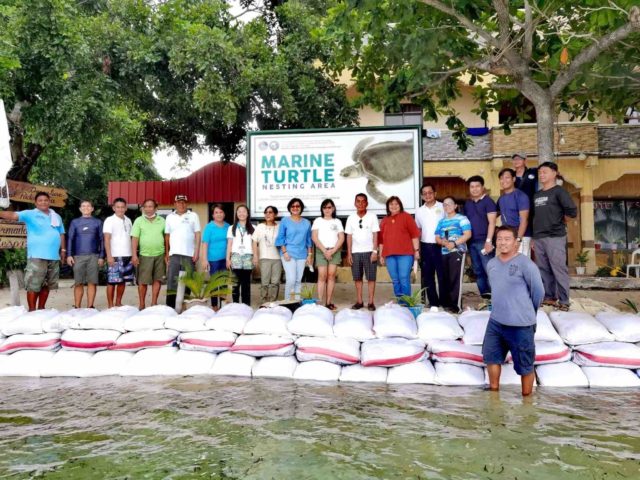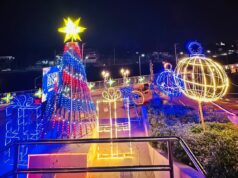Department of Environment and Natural Resources opens a Pawikan nesting site in Magalawa Island in Palauig, Zambales. (DENR)
IBA, Zambales — Department of Environment and Natural Resources (DENR) opened a Pawikan nesting site in Magalawa Island in Palauig, Zambales.
This is to raise public awareness and community support for the protection and conservation of marine resources.
DENR Masinloc Community Environment and Natural Resources Office Head Ariel Mendoza said the coastline of the 42-hectare Magalawa Island has been an important nesting ground of marine turtles.
It is located within the more than 7,000-hectare Masinloc and Oyon Bay Protected Seascape and Landscape (MOBPLS).
“We have sighted Olive ridley and Green sea turtles nesting in the white sand of Magalawa since December of last year,” Mendoza shared.
More than 400 hatchlings of these species have been released back to the sea of MOBPLS.
DENR Undersecretary Annaliza Teh explained that climate resilient infrastructure should be an integral part of a marine protected area management plan to achieve environmental sustainability.
“Solar energy panels and rain water harvesting system are some of the important infrastructure that can help in attaining climate resiliency in protected area,” she said.
For his part, United States Agency for International Development Sustainable Interventions for Biodiversity, Oceans and Landscapes Project Field Site Team Leader Felix Mendoza. pointed out the important support and assistance that they have implemented to better manage the MOBPLS.
“Marine turtle conservation, mangrove and beach forests rehabilitation training course and community managed-savings and credit association are some of the capacity building support of the project to effectively protect the MOBPLS,” he said.
MOBPLS is the first and only legislated marine protected are in Zambales and in Central Luzon under Republic Act 11032 otherwise known as Expanded National Integrated Protected Area System.
It is home to unique and diverse species including the hybrid mangrove species of Rhizophora x lamarckii, and the blue-spotted rabbit fish.
Also, important habitat such as the 1,500-hectare coral reefs, 109-hectare mangrove forests and vast seagrass beds.
This year’s environment month theme “Only One Earth”, underscores the need to live sustainably in harmony with nature, and the possibilities for shifting to a greener lifestyle through policy and individual choices. (CLJD-PIA 3)





